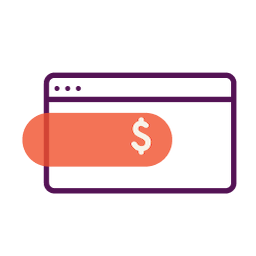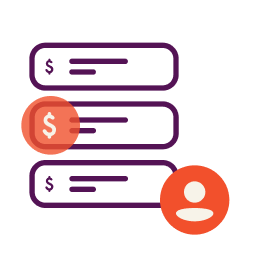This article was updated Nov. 4, 2020 to reflect the new minimum loan size for MSNLF loans.
In response to the financial strain on small businesses resulting from the COVID-19 crisis, the Federal Reserve has introduced the Main Street Lending Program (MSLP). The purpose of this lending program, as outlined by the Federal Reserve, is to provide the availability of credit to “…help companies that were in sound financial condition prior to the onset of the COVID-19 pandemic maintain their operations and payroll until conditions normalize.”
The Treasury Department is making a $75 billion equity investment in what’s called a Special Purpose Vehicle in connection with the program. The Treasury’s investment is part of the CARES Act, but is not part of the Paycheck Protection Program (PPP) or the Economic Injury Disaster Loan (EDIL) funds available through the Small Business Administration (SBA) though they are available to some of the same small businesses.
These Main Street loans associated with the MSLP are neither forgivable like those that are part of the PPP nor do they offer a grant component like an EIDL. They are what is called “full-recourse” loans. In other words, the debt is secured debt that gives the lender the rights to assets beyond just the secured collateral specified in the loan contract to cover full repayment of the borrowers loan obligations if they default on the loan.
What is an MSNLF, MSPLF, and the MSELF?
If you thought the PPP and the EIDL were confusing, you will also find the credit facilities that are part of the Main Street Lending Program equally difficult to understand. The Federal Reserve has shared an FAQ document that can fill in any of the blanks I’ve left out of this explanation, but you should consult with your accountant, CPA, attorney, or other trusted financial advisor to determine if (or which) one of the loans associated with the MSLP makes sense for your business situation.
There are three ways to access MSLP funds. All three have the same requirements for Eligible Borrowers and Eligible Lenders, share many of the same features, include the same maturity, interest rate, deferral of principal for two years, deferral of interest for one year, and the ability of the borrower to prepay without penalty. The differences include minimum and maximum loan amounts, how loan amounts are determined, whether or not you can use loan funds to pay off existing debt, and how they interact with a borrower’s current outstanding debt.
New Loan Facility (MSNLF): These loans have 5-year terms ranging in size from $250,000 to $35 million. (Note the Federal Reserve recently lowered the minimum loan amount to $100,000 and eased restrictions for borrowers who have Paycheck Protection Program loans.) The maximum loan size cannot, when added to the borrowers existing and outstanding available debt, exceed four times the borrowers adjusted 2019 earnings before interest, taxes, depreciation, and amortization (EBITDA). The loans must not be, contractually subordinated in terms of priority to any of the borrower’s other loans or debt.
Priority Loan Facility (MSPLF): These loans have 5-year terms ranging in size from $250,000 to $50 million. The maximum size of an MSPLF loan cannot, when added to the borrower’s existing outstanding and undrawn available debt, exceed six times the adjusted EBITDA. At the time of origination and at all times thereafter, the Eligible Loan must be senior to or pari passu (on equal footing) with, in terms of priority and security, the borrower’s other debt instruments, other than mortgage debt. Eligible Borrowers may, at the time of the origination of the loan, refinance existing debt owned by the borrower to a lender that is not the Eligible Lender. In other words, if you have loans with other lenders you can use this loan to refinance those loans.
Expanded Loan Facility (MSLEF): In the case of the MSLEF, Eligible Lenders increase (or “upsize”) an Eligible Borrower’s existing term loan or revolving credit facility. The upsized loan has a 5-year term ranging in size from $10 million to $300 million. The maximum size of a loan made in connection with the MSELF cannot, when added to the borrower’s existing outstanding and undrawn available debt, exceed six times the borrower’s adjusted 2019 EBITDA. At the time of origination and at all times thereafter, the Eligible Loan must be senior to or pari passu with, in terms of priority and security, the borrower’s other debt instruments, other than mortgage debt.
What is Different From the PPP?
The PPP, as established by the CARES Act, makes funds available through the SBA-loan guarantee program to support the payroll and operations of small businesses negatively impacted by COVID-19 through government-guaranteed loans that include forgiveness for borrowers who meet the requirements.
The MSLP was designed to support small- and medium-sized businesses that were unable to access PPP loan funds or that require additional financial support after receiving a PPP Loan. As mentioned above, these loans are NOT forgivable.
Who is Eligible for an Main Street Lending Program Loan?
According to the Federal Reserve, an eligible borrower is a for-profit business including partnerships, LLCs, corporations, associations, trusts, cooperatives, joint ventures (with no more than 49% participation from a foreign entity, or a trial business concern defined in 15 U.S.C. § 657a(b)(2)(C). Other forms of organization may be considered for inclusion as a Business under the Facility as the discretion of the Federal Reserve, provided they meet the following requirements:
- Was established prior to March 13, 2020
- Is not an ineligible business
- Meets at least one of the following two conditions: (1) has 15,000 employees or fewer, or (2) had 2019 annual revenues of $5 billion or less
- Is created or organized in the United States or under the laws of the United States with significant operations in and a majority of its employees based in the United States
- Does not participate in the MSPLF, the MSELF, or the Primary Market Corporate Credit Facility
- Has not received specific support pursuant to the Coronavirus Economic Stabilization Act of 2020 (Subtitle A of Title IV of the CARES Act)
According to the Federal Reserve, “Businesses that have received PPP loans are permitted to borrow under the Facility, provided they are Eligible Borrowers.”
In addition to the above, there are other certifications required from Eligible Borrowers:
- The Eligible Borrower must commit to refrain from repaying the principal balance of, or paying any interest on, any debt until the Eligible Loan is repaid in full, unless the debt or interest payment is mandatory and due
- The Eligible Borrower must commit that it will not seek to cancel or reduce any of its committed lines of credit with the Eligible Lender or any other lender
- The Eligible Borrower must certify that it has a reasonable basis to believe that, as of the date of origination of the Eligible Loan and after giving effect to such loan, it has the ability to meets its financial obligations for at least the next 90 days and does not expect to file for bankruptcy during that time period
- The Eligible Borrower must commit that it will follow compensation, stock repurchase, and capital distribution restrictions that apply to direct loan programs under section 4003(c)(3)(A)(ii) of the CARES Act, expect that an S corporation or other tax pass-through entity that is an Eligible Borrower may make distributions to the extent reasonably required to cover its owner’s tax obligations in respect of the entity’s earnings
- The Eligible Borrower must certify that it is eligible to participate in the Facility, including in light of the conflicts of interest prohibition in section 4019(b) of the CARES Act
Borrowers that participate in the MSLP should make commercially reasonable efforts to maintain its payroll and retain its employees during the time the Eligible Loan is outstanding. In other words, the borrower should undertake good-faith efforts to maintain payroll and retain employees. Borrowers who have already laid-off or furloughed workers as a result of disruptions caused by the coronavirus are eligible to apply for the MSLP loans.
What Are the MSLP Loan Terms?
An Eligible Loan is made by an Eligible Lender to an Eligible Borrower that was originated after April 24, 2020, provided the loan has all of the following features:
- 5-year maturity
- Principal payments are deferred for two years and interest payments are deferred for one year (unpaid interest will be capitalized)
- Adjustable rate of LIBOR (1 or 3 month) + 300 basis points
- Principal amortization of 15% at the end of the third year, 15% at the end of the fourth year, and a balloon payment of 70% at maturity at the end of the fifth year
- A minimum loan size of $250,000
- A maximum loan size that is the lesser of (i) $35 million or (ii) an amount that, when added to the Eligible Borrower’s existing outstanding and undrawn available debt, does not exceed four times the Eligible Borrower’s adjusted 2019 earnings before interest, taxes, depreciation, and amortization (“EBITDA”)
- Is not, at the time of origination or at any time during the term of the Eligible Loan, contractually subordinated in terms of priority to any of the Eligible Borrower’s other loans or debt instruments
- Prepayment is permitted without penalty
If the Eligible Borrower has other loans outstanding with the Eligible Lender as of December 31, 2019, such loans must have had an internal risk rating equivalent to a “pass” in the Federal Financial Institutions Examination Council’s supervisory rating system on that date.
Restrictions for How MSLP Funds May Be Used
The Main Street Lending Program is intended to help small- and medium-sized businesses that were in sound financial condition prior to the onset of COVID-19 maintain their operations and payroll until conditions normalize, the loans may not be used for:
- The benefit of an Eligible Borrower’s foreign parents, affiliates, or subsidiaries
- To refinance or accelerate payment of an existing debt, except (i) at the time of origination of an MSPLF Loan if the debt was owed to a different, unaffiliated lender
- Loan proceeds may not be used to pay dividends, distribute capital, repurchase equity, or pay compensation over specified thresholds
- Repaying other debt ahead of schedule
Applying for an MSLP Loan
To apply for a loan under the program, you will need to submit an application and any other documentation required by an Eligible Lender. If you are an Eligible Borrower that meets the minimum eligibility requirements outlined above, you should contact an Eligible Lender for more information about whether or not the lender intends to participate in the program and to request more information.
Meeting the minimum requirements outlined above does not guarantee your loan application will be approved. Eligible Lenders will apply their own underwriting standards to evaluate your financial condition and creditworthiness. The lender may also require additional information and documentation to make this evaluation. In other words, even if your business meets the Eligible Borrower requirements outlined above, you may not be approved for a loan or may not receive the maximum allowable loan amount.
Current list of Eligible Lenders
Is an MSLF Loan Right for My Business?
If your business is too big to take advantage of the Paycheck Protection Program or too small for other Federal Reserve credit facilities, this could be right for your business. To determine if this loan program is really right for your business, I advise you to consult with your CPA, account, attorney, or other trusted financial advisor to review the application criteria before you apply. You can learn more about this program by visiting the Federal Reserve Bank of Boston’s website.
This article was originally written on July 24, 2020 and updated on January 9, 2021.




Hello reader,
I’m beginning to believe the Main Street Lending program is a large scam being used to divert funds until larger businesses can grab the unused funds or unspent funds end up going to their real target when the program closes in September . I have been following the Main Street program intently since April when our banker handling the PPP loan, we received told us about the upcoming Main Street lending Program. We were excited at the possibility of getting help for our company. Our company was formed in Nevada in September of 2018; however, we did not start actively contracting until late November of 2019. Our business was remodeling occupied nursing homes in the Silicon Valley area of California. Due to a slow paying client our 2019 EBIDTA fell below the minimum amount required to qualify for the Main Street lending program. Had the 2 invoices past due in 2019 been paid, we would have easily qualified for Main Street. We were going strong when ordered to shut down on March 16th,2020. The 4 1/2 months we were in business we had an accrual EBITDA of over $600k.
The biggest issue with the Main Street program is finding a bank that is offering loans through the Main Street Lending Program. Our bank is Bank of the West in Nevada. They denied us because we have not previously completed a loan with Bank of the West. We started doing business with Bank of the West in November when we started our first contract. The Main Street Lending Program opened on July 6th, 2020. Today is July 24th, 2020. I have been trying like crazy to get any bank to communicate with me regarding the Main Street Lending Program. They just do not exist. Yes, the Boston Fed has links on a pretty click by state map to banks that claim they are taking on new customers for the Main Street Lending Program. I have contacted every bank and their subsidiaries in California and Nevada. I have left messages and emails for every contact listed. NOTHING! So, when articles say there has been little interest in this MSLP, well maybe that is because it is inaccessible to the average or above average business owner. Where are the links to apply at with these banks accepting new customers for MSLP? Why aren’t these banks replying to emails replied? Who is facilitating these loans? I have been at it for the past 18 days diligently. I have tried every way to contact. There was one bank I have been able to communicate with. When the lady answered the phone, she put me on hold after what seemed to be her not knowing what the Main Street Lending Program was, that was Nevada State Bank whose parent company is Zions Bancorporation. They are listed through the Boston Fed website as taking new customers for MSLP. The outcome of that call was we needed to come into the branch and apply in person.
The reason we are trying so hard for the Main Street Loan is because we had to create a new business plan since the nursing home remodel industry is shut down indefinitely. We have a good plan that will make it through the fallout that is coming , but we need money , Money that is now unattainable from normal lending sources due to zero monies being earned from our business in the past 4 months. One must assume at this point that something fishy is going on with this Main Street lending program. I cannot get straight answers for questions I have asked the Boston Fed and I cannot get normal communication from the banks listed as Participating in the MSLP. This program has a deadline. We are 18 days in, and I have only heard of 1 or 2 loans been granted.
Maybe I am missing something, maybe I am looking in the wrong places, if so, could someone please help me. I have 30 employees who would like to get back to work, and I have a business I worked hard to build that I do not want to lose. Thank you for taking time to read this. I wish the best for everyone during this ridiculous crisis our country is going through. Jason